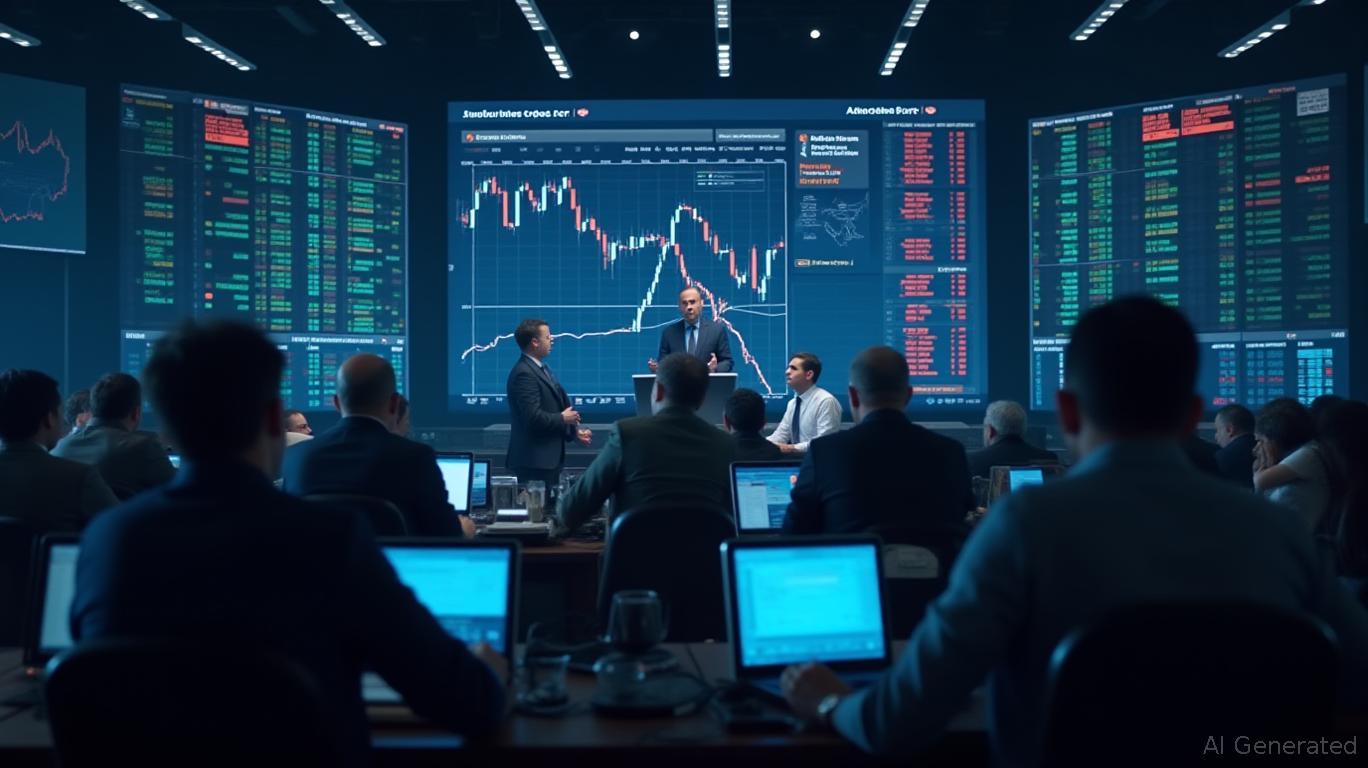Navigating Stock Trading with Macroeconomic Indicators: Understanding the Impact of Policy Changes
AInvest EduWednesday, Jun 4, 2025 9:11 pm ET
Introduction
In the world of investing, understanding how macroeconomic indicators influence stock market movements is crucial. One key aspect affecting these indicators is policy changes, such as tariffs. This article explores the relationship between policy changes and market volatility, particularly focusing on the U.S. services sector. By delving into this concept, investors can better navigate their investment strategies in response to economic shifts.
Core Concept Explanation
Macroeconomic indicators are statistics that reflect the overall health and direction of an economy. They include data points like GDP growth, employment rates, inflation, and more. Policy changes, such as tariffs—taxes imposed on imported goods—can significantly influence these indicators. For example, tariffs might reduce international trade, impacting GDP and sector performance.
Application and Strategies
Investors can apply an understanding of macroeconomic indicators and policy changes in several ways:
Sector Analysis: By monitoring tariff changes, investors can assess which industries might be affected. For instance, increased tariffs on imported goods can impact manufacturing, while the services sector might experience reduced demand.
Diversification: Investors can mitigate risks by diversifying their portfolios across sectors less susceptible to policy changes.
Timing and Volatility: Recognizing periods of heightened volatility due to policies can help investors make timely decisions—either capitalizing on short-term opportunities or maintaining a long-term perspective.
Case Study Analysis
Consider the contraction in the U.S. services sector following tariff changes in recent years. With tariffs creating barriers to international trade, services that rely on global markets saw reduced demand. This led to a contraction in the sector, affecting stock prices of companies heavily reliant on international business.
For example, a company like XYZ Corp., which provides services globally, experienced a downturn in stock prices due to decreased international contracts. Investors who understood the macroeconomic implications of tariffs could anticipate these shifts and adjust their holdings accordingly.
Risks and Considerations
Investing based on macroeconomic indicators and policy changes carries risks:
Market Volatility: Policy changes can cause unpredictable fluctuations in stock prices.
Sector Sensitivity: Some sectors are more sensitive to policy changes than others.
To mitigate these risks, investors should:
Conduct thorough research to understand the potential impact of policy changes.
Develop a risk management strategy, such as stop-loss orders or hedging.
Conclusion
Understanding the relationship between policy changes and macroeconomic indicators is integral for informed investing. By analyzing how tariffs and other policies affect market volatility and sector performance, investors can make strategic decisions. Diversifying portfolios and staying informed on economic policies are essential strategies to navigate this complex landscape successfully.
In the world of investing, understanding how macroeconomic indicators influence stock market movements is crucial. One key aspect affecting these indicators is policy changes, such as tariffs. This article explores the relationship between policy changes and market volatility, particularly focusing on the U.S. services sector. By delving into this concept, investors can better navigate their investment strategies in response to economic shifts.
Core Concept Explanation
Macroeconomic indicators are statistics that reflect the overall health and direction of an economy. They include data points like GDP growth, employment rates, inflation, and more. Policy changes, such as tariffs—taxes imposed on imported goods—can significantly influence these indicators. For example, tariffs might reduce international trade, impacting GDP and sector performance.
Application and Strategies
Investors can apply an understanding of macroeconomic indicators and policy changes in several ways:
Sector Analysis: By monitoring tariff changes, investors can assess which industries might be affected. For instance, increased tariffs on imported goods can impact manufacturing, while the services sector might experience reduced demand.
Diversification: Investors can mitigate risks by diversifying their portfolios across sectors less susceptible to policy changes.
Timing and Volatility: Recognizing periods of heightened volatility due to policies can help investors make timely decisions—either capitalizing on short-term opportunities or maintaining a long-term perspective.
Case Study Analysis
Consider the contraction in the U.S. services sector following tariff changes in recent years. With tariffs creating barriers to international trade, services that rely on global markets saw reduced demand. This led to a contraction in the sector, affecting stock prices of companies heavily reliant on international business.
For example, a company like XYZ Corp., which provides services globally, experienced a downturn in stock prices due to decreased international contracts. Investors who understood the macroeconomic implications of tariffs could anticipate these shifts and adjust their holdings accordingly.
Risks and Considerations
Investing based on macroeconomic indicators and policy changes carries risks:
Market Volatility: Policy changes can cause unpredictable fluctuations in stock prices.
Sector Sensitivity: Some sectors are more sensitive to policy changes than others.
To mitigate these risks, investors should:
Conduct thorough research to understand the potential impact of policy changes.
Develop a risk management strategy, such as stop-loss orders or hedging.
Conclusion
Understanding the relationship between policy changes and macroeconomic indicators is integral for informed investing. By analyzing how tariffs and other policies affect market volatility and sector performance, investors can make strategic decisions. Diversifying portfolios and staying informed on economic policies are essential strategies to navigate this complex landscape successfully.

Disclaimer: The news articles available on this platform are generated in whole or in part by artificial intelligence and may not have been reviewed or fact checked by human editors. While we make reasonable efforts to ensure the quality and accuracy of the content, we make no representations or warranties, express or implied, as to the truthfulness, reliability, completeness, or timeliness of any information provided. It is your sole responsibility to independently verify any facts, statements, or claims prior to acting upon them. Ainvest Fintech Inc expressly disclaims all liability for any loss, damage, or harm arising from the use of or reliance on AI-generated content, including but not limited to direct, indirect, incidental, or consequential damages.

Comments
No comments yet